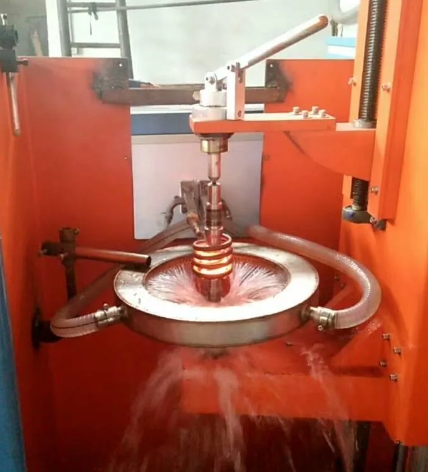- 03
- Nov
What factors need to be considered when customizing induction hardening equipment?
Какие факторы необходимо учитывать при настройке оборудование для индукционной закалки?
1. Форма и размер заготовки.
Для больших заготовок, стержней и твердых материалов следует использовать оборудование для индукционного нагрева с высокой относительной мощностью и низкой частотой; для мелких заготовок, труб, пластин, шестерен и т. д. следует применять высокочастотное закалочное оборудование с малой относительной мощностью.
2. Глубина и площадь нагреваемой детали.
If the heating depth is deep, the area is large, and the whole is heated, induction heating equipment with high power and low frequency should be selected; if the heating depth is shallow, the area is small, and part of the heating is heated, high-frequency quenching equipment with relatively low power should be selected.
3. The heating speed required for the workpiece
The heating speed required is fast, and the induction heating equipment with relatively large power and relatively high frequency should be selected.
4. Время непрерывной работы оборудования
Продолжайте задачу в течение длительного времени и относительно выберите индукционное нагревательное оборудование с несколько большей мощностью.
5. Интервал соединения между чувствительными компонентами и оборудованием
The connection is long, and even requires the use of water-cooled cables for connection, and induction heating equipment with relatively high power should be selected.
6. Требования к процессу обработки детали
For quenching, welding and other processes, the power of the quenching machine tool is relatively small, and the frequency is higher. For processes such as annealing and tempering, the power of the quenching machine tool is larger and the frequency is lower. Red punching, hot forging, melting, etc., need to be thoroughly For a process with good thermal results, the power of the quenching machine tool should be larger and the frequency should be lower.
7. Information of the workpiece
Среди металлических материалов чем выше температура плавления, тем выше мощность, ниже температура плавления, ниже мощность, ниже удельное сопротивление и ниже мощность.

